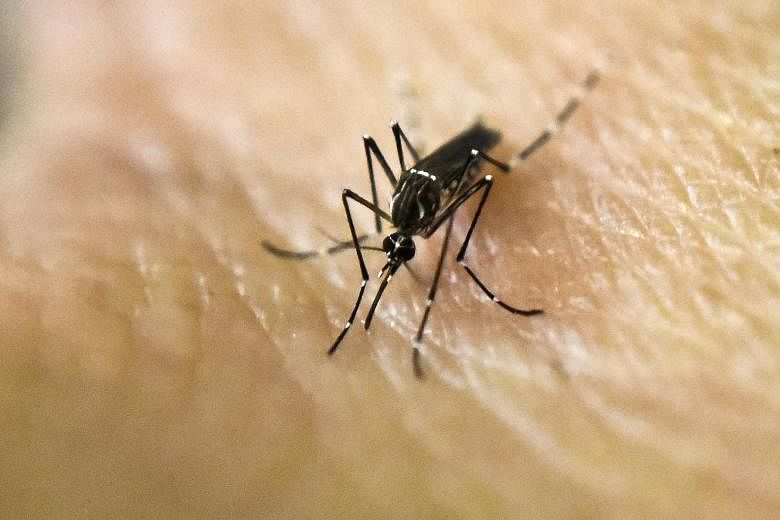Structural virologist Lok Shee-Mei remembers her first paper on the Zika virus as a mad race against time.
Even as she worked to be one of the first in the world to image the virus, she knew that her contemporaries in the United States were striving to do the same.
The early days in particular - when she and her team were labouring to grow the virus in their laboratory - were the most uncertain.
"If that batch (of the virus) was no good, we were done for. They would have scooped us," said Associate Professor Lok, who is from the Emerging Infectious Diseases Programme at the Duke-NUS Medical School. "This was a very urgent thing and I knew there was very fierce competition."
Typically, it takes between six months and two years for a scientific research paper to be published. For Prof Lok, 42, the whole process took just four months. Her study was funded by the National Research Foundation.
She received the virus samples in January and published her paper in the distinguished international journal Nature in April. Her competitors - who also studied the structure of the virus - were just a week and a half behind.
"The good thing is that when different people work on a subject, they think in very different ways," she said. "Their paper... was written from a completely different perspective from ours."
The mosquito-borne Zika virus is a flavivirus, making it cousins with the dengue, yellow fever and West Nile viruses. Infections usually result in flu-like symptoms similar to but less severe than those caused by dengue.
But the virus has generated widespread alarm after doctors found a possible link between Zika infections and babies born with microcephaly, or unusually small heads.
Although rare, the virus has also been associated with Guillain- Barre syndrome, in which a person's own immune system attacks his nerve cells.
In studying the Zika virus' structure, Prof Lok and her team found that it was something of a hybrid. Parts of it resembled other viruses in the same family that cause problems with the nervous system; others looked like dengue, which causes fevers and rashes.
"Zika does both - it's sort of in between these two groups," Prof Lok said. "It usually causes febrile (showing symptoms of fever) illnesses, but in the foetus, it attacks the brain."
Knowing this means scientists now have "targets" to work on in their quest to develop a Zika vaccine or minimise the impact of the virus on the human body.
"If this part looks more like the virus that attacks the nerve cells, and if you delete this or mutate that and it reduces the neurovirulence, then you could potentially use that as a vaccine," she said.
Prof Lok, who has studied the dengue virus since her undergraduate days two decades ago, also found that the Zika virus is much tougher than its dengue cousin.
"The surface is so much more compact than dengue. We did thermal work, heated it to different temperatures, but even at 40 deg C, it doesn't seem to kill the virus."
This explains why it can stay in bodily fluids such as saliva, semen and urine, and can be transmitted through sexual contact.
"Identifying the places that cause this increased stability and then... making a drug that destroys these strong interactions might make the virus less potent," Prof Lok explained.
The next step for her is to look at how the virus infects cells and what kind of structural changes it undergoes to do so.
She pointed out that Zika "is going to be Singapore's problem too, because it uses exactly the same mosquito vector as dengue".
READ MORE Zika and birth defects by Cheryl Teh: Zika may not be to blame for birth defects after all


